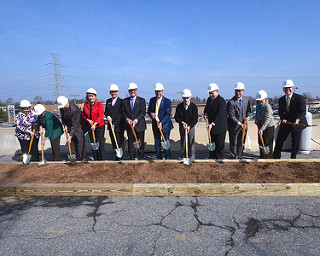6 Strategies to Avoid and Manage a “Cash Crunch”
Failing to receive a check on time causes a wide range of problems that range from the mild, such as tapping into an existing line of credit to bridge short-term cash needs, to the very severe, such as having to stop operations due to a complete lack of funding. No matter whether your enterprise is at the issuing or receiving side of the payment process, cash crunches undermine the sustainability of your business and can hold back growth. Let’s review some key strategies to avoid and manage a cash crunch.
To learn more, download our whitepaper on the top 10 contract management best practices.
- Set Clear Contracts for Contract Workers and Subcontractors
Everyone deserves to be paid on time. Paying your contract and seasonal workers and subcontractors on time is no exception. Draft and revise a contract template for these type of workers that meets the requirements from your legal and HR departments. Clearly establish what lump sum or percentage will the contract worker or contractor get paid, what is required to earn those payments, and in what increments will future payments be issued. Build a contract template that anticipates potential questions from individuals whose services are hired by your enterprise
- Localize Contracts with Localized Payment Clauses
Once you have a clear written agreement outlining the payment schedule, develop additional clauses that meet local legislation requirements. As your enterprise crosses borders, whether across states or countries, your contracts need to reflect the changes in jurisdiction. From acknowledging a longer time to process local permits to keeping abreast from upcoming changes, here is a list of five best practices to localize your contracts.
- Determine “Best Efforts” and “Commercially Reasonable Efforts” Clauses
Within the contract template, it’s not sufficient for your enterprise to establish what is needed for a contractor to earn payment but also to provide clear guidelines to establish the context of what is considered “best efforts” and/or “commercially reasonable efforts.”
During the localization of contracts pay particular attention to the local rules applying to the use of these terms. Some jurisdictions use these terms interchangeably while others set a higher standard for “best efforts.” The guidelines for “best efforts” and “commercially reasonable efforts” in your contract will be material in the event of a dispute so set the stage from the start to minimize ambiguity as much as possible.
- Establish Guidelines for Dispute Resolution
Still, no matter how much cross your t’s and dot your i’s, disputes about payment are bound to happen. Include within your contract a section on dispute resolution that is broad enough to cover other types of disputes and provides specifics regarding payment. A good practice is to use mediation or arbitration as ways to resolving disputes because these processes provide the parties greater control over the processes and set clearer expectations about the settlement efforts. The American Arbitration Association (AAA) provides a manual on drafting dispute resolution clauses in a general commercial setting and includes a series of clauses deemed appropriate the AAA for use in particular contexts.
One step further is to establish a KPI that keeps track of the number of payment disputes as a number or percentage of all payments and to determine an acceptable statistic. For additional ideas on KPIs for evaluating your contract management processes, review this list and this additional list.
- Work with Finance Department to Review Cash Flow Statements
Tap into your in-house financial experts to review cash inflows and outflows directly related to your core business operations. The details will be available on the cash flow statements, which detail cash flows from operating, investing, and financing activities.
A review of past cash flow statements enables you to identify trends for future potential cash crunches, evaluate current sources of financing to cover short-term needs, and determine if you need to increase the limits of current loans or find new working capital options. Additionally, work with your finance department to create projections for the next one to three years that you will use as benchmarks for future performance.
- Leverage E-signature Software
One common reason for delays in payment is relying in physical signatures to issue payments. Here’s a very dramatic example: the Office of the State of Hawaii had an average time between 4 and 12 days for a state document to be signed. By implementing e-signature software, the state government office was able to reduce that average time to between 129 and 181 minutes!
Reducing the wait time from days to hours for gathering a necessary signature empowers your enterprise to expedite all payments and meet the schedule of payments set by your contracts.
Takeaway
“Ghosting” contractors due to a pending payment undermines your relationships and increases your chances of a revenge subcontracting “squeeze.” By setting clear contracts with contractors and subcontractors, creating a library of local clauses, providing context for “best efforts” and “commercially reasonable efforts” clauses, establishing dispute resolution guidelines, review cash flow statements, and leveraging e-signature software, you’re taking important steps in avoiding and managing a cash crunch.


